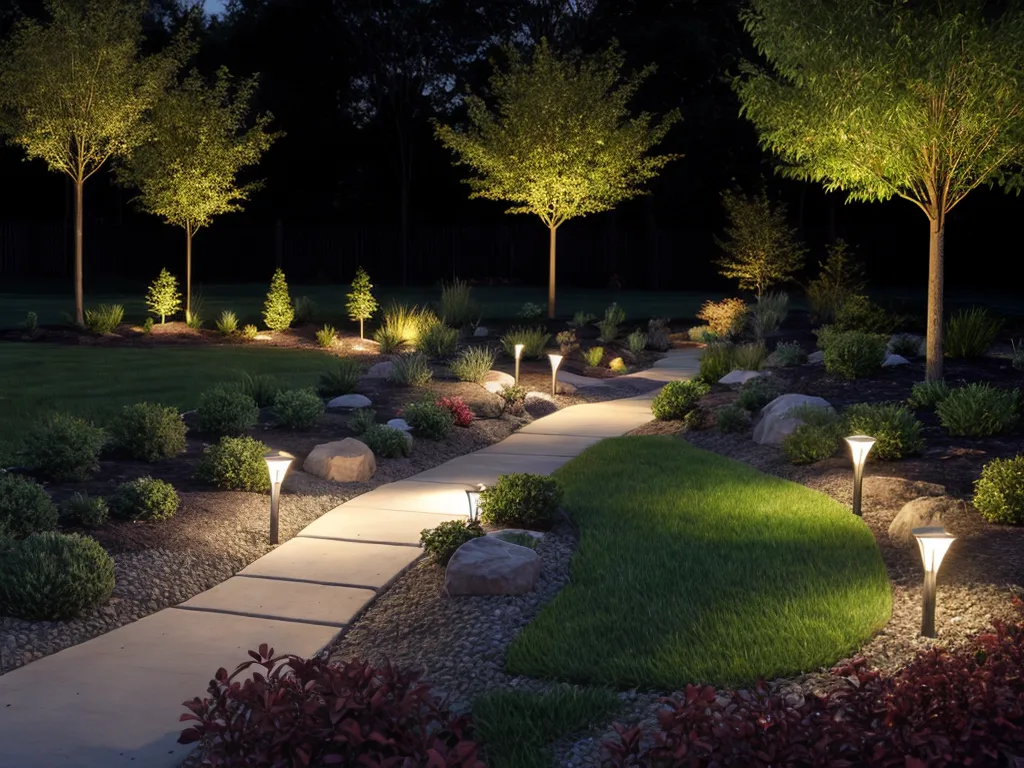
Installing low voltage landscape lighting is an easy DIY project that can dramatically improve the look of your home's exterior. With the right planning and materials, you can create a beautiful and functional lighting system to highlight trees, gardens, pathways and architectural details. This comprehensive guide will walk you through everything you need to know to design and install your own low voltage landscape lighting.
Why Low Voltage Lighting?
Low voltage lighting systems operate on 12V DC power, which is much safer and more energy efficient compared to the 120V AC power that runs your home's electrical system. Here are some key benefits of using a low voltage system:
-
Safer - Low voltage minimizes the risk of electrocution or electrical shorts.
-
Energy efficient - Low voltage fixtures consume less energy, saving you money.
-
Easy to install - No need to dig trenches or hire an electrician. Low voltage lighting can be installed by securing wires to surfaces.
-
Flexible - Components like fixtures, wire and transformers are modular and easy to rearrange.
-
Controllable - Use timers, dimmers and sensors to control when and how bright lighting turns on.
Getting Started with the Design
Careful planning is crucial to ensuring your low voltage lighting system meets your needs and works cohesively. Here are some tips for designing your system:
-
Evaluate your landscape - Note important features you want to highlight, areas that need illumination and opportunities to conceal wires.
-
Determine fixture types - Well lights for trees/posts, path lights for pathways, flood lights for walls, and deck lights for under railings.
-
Choose fixture finishes - Bronze, brass, nickel, copper or stainless steel. Match or complement your home.
-
Calculate fixture quantity - Usually one light per 4-6 feet is ideal for pathways. Highlight key landscape features.
-
Determine transformer wattage - Add up fixture wattages and choose a transformer rated for at least 25% more capacity.
-
Consider controls - Timers, motion sensors, dimmers. Place these between the transformer and fixtures.
-
Sketch a layout - Dot where fixtures should go, connect with lines to indicate wiring paths.
Shopping List - Components to Buy
Once you have a lighting plan mapped out, create a shopping list with the equipment you'll need:
-
Fixtures - Well lights, path lights, flood lights, spot lights, deck lights etc.
-
Transformer - Converts 120V AC to 12V DC. Size for 25% over total wattage.
-
Wires - Flexible, copper, dual conductor, direct burial wires. Choose gauge per wattage and length.
-
Junction boxes - For connecting wire segments. Use waterproof types.
-
Timer - Automates when lighting turns on/off. Consider smart options.
-
Low voltage staples - Secures wiring against walls and surfaces.
-
Wire clips - Fasten wires tightly when you can't staple.
-
Sealant - For fixture holes. Prevents water damage.
-
LED bulbs - Long lasting, energy efficient replacement bulbs.
Step-by-Step Installation Guide
Once you have all the components, it's time to install your low voltage landscape lighting system:
1. Install the Transformer
Choose a location that is protected from the elements but easily accessible. Garages and sheds are ideal. The transformer should be connected to a GFCI outlet and mounted at least 6 inches above the ground.
2. Run Wiring to Fixture Locations
Start at the transformer and map out a path to run your main wire to lights. Bury wires at least 6 inches. Use junction boxes to connect segment wires.
3. Connect Fixtures to Wiring
Attach fixture wires to main wires using waterproof connectors. Make sure wire polarity matches. Leave 12-18 inches of slack.
4. Secure Fixtures in Place
For path lights, dig a hole and insert stake attached to the fixture. For flood lights, mount on a surface with screws. Use sealant.
5. Adjust and Test Lighting
Aim flood lights. Verify circuits work and make any wire connections as needed. Turn on the transformer and test illumination.
6. Run Any Secondary Wiring to Controls
If adding a timer, dimmer or sensor, run additional 18 gauge wire from the device to the transformer.
7. Make any Final Adjustments
Realign fixtures orcomponents as needed. Confirm appropriate light distribution. Enjoy your lighting!
Tips for a Successful Installation
Follow these best practices as you install your low voltage landscape lighting system:
- Test components before burying wires. It's easier to troubleshoot on the surface.
- Label wire junctions. This helps identify problem areas if issues arise.
- Use cable staples every 5-6 inches when running wiring across surfaces.
- Bury main wires at least 6 inches underground and 3 inches under hardscape.
- Avoid installing fixtures within 10 feet of a pool, spa or fountain.
- Have a plan for concealing wiring. Bury it, hide it under mulch, or run it behind shrubs.
- Use gel-filled wire connectors to make waterproof connections.
- Only dig as deep as needed for secure placement. Fixtures conduct heat into the ground.
- Point flood lights down at least 45 degrees to avoid glare and light pollution.
Conclusion
Installing a low voltage landscape lighting system is an achievable DIY project that pays big dividends in improving your home's curb appeal and outdoor ambiance. Spend time designing a layout that meets your unique needs and lighting desires. Purchase quality fixtures and components suited for outdoor use. With attention to detail during installation and some helpful wiring tips, you can execute a beautiful professional-looking lighting system on your own. Your home and landscaping will shine like never before!